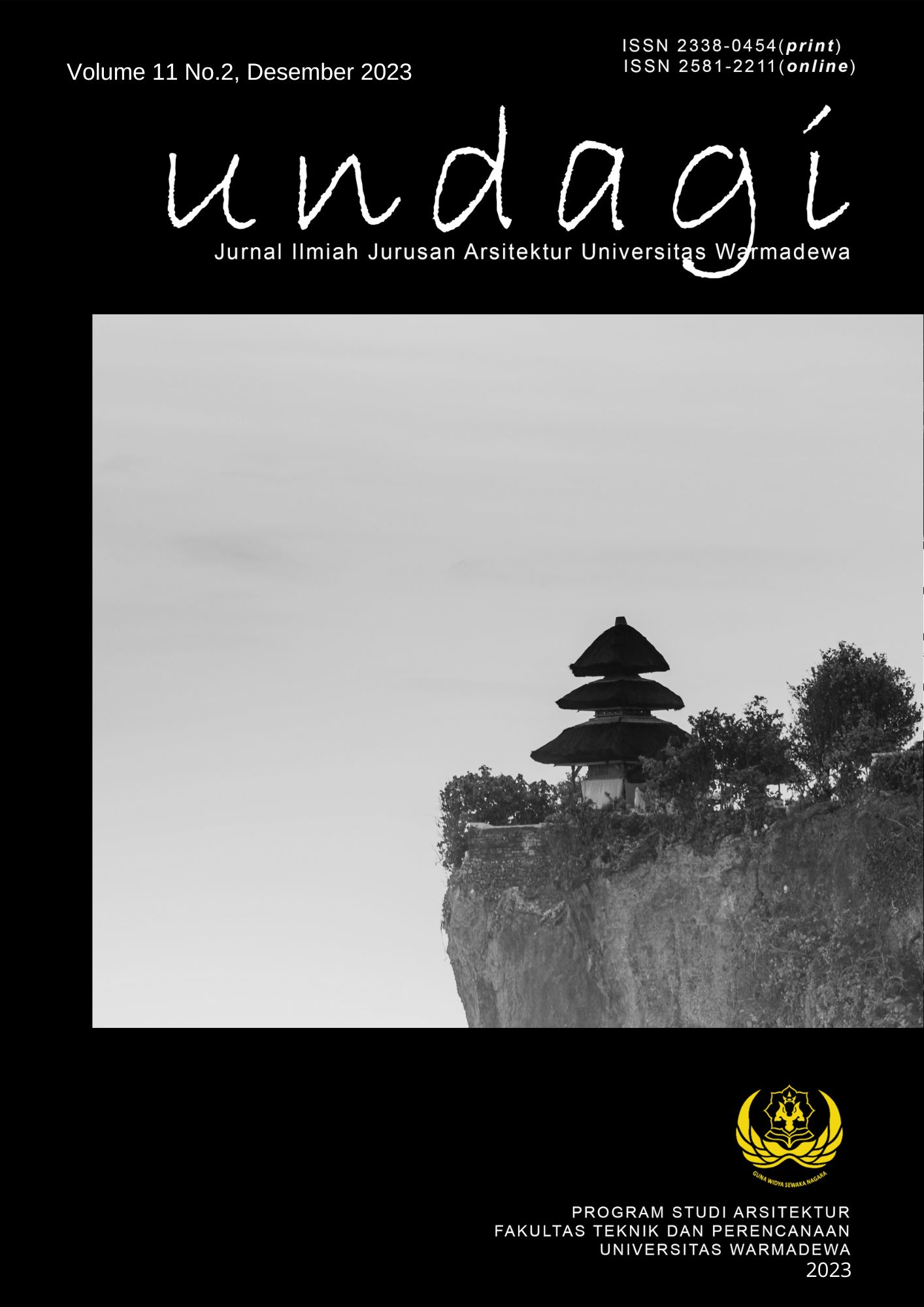Memperbaharui Kawasan Heritage Gajah Mada dengan Pengadaan Industri Kreatif Berkonsep Adaptive Reuse
Bahasa Indonesia
Abstract
The Gajah Mada area has become a cultural heritage which means all cultural elements that are at least 50 years old; synonymous with religious, aesthetic, and historical values; represents style, lifestyle, time, region, and mindset. Cities with a cultural perspective position culture into 3 main functions, namely as a basic potential, approach, and building orientation. Heritage areas have high potential to support community creativity because they are guided by the historical values ​​of Balinese culture. So later the developments that occur will still be balanced and filtered so as to create a balance between the progress of the times and the history of Balinese culture. Over time, many store house managers were not ready to accept the changing times, resulting in reduced public interest in coming. The decline in productivity in the Gajah Mada area has resulted in a decrease in the quality of the area, such as unclear shop ownership because it has begun to be abandoned, changes to the facade and interior space according to the manager's taste, giving rise to a slum impression, pedestrian arrangement along the road makes the storehouse elevation very low from the sidewalk, the lack of available parking space because many settlements have sprung up behind the shop houses. This also makes the interest of visitors to visit less and less. Competition for functional buildings in terms of comfort has also begun to develop, many supermarkets have sprung up, supermarkets are more interesting to visit. If the time limit is not properly anticipated focusing on alternative actions or solutions to increase productivity, the Gajah Mada Heritage area has the potential to become a dead heritage area.
To prevent this area from being left behind, it is necessary to reorganize and redesign the Gajah Mada Heritage Area into a creative industry in Denpasar City. Areas that initially focused on offline trading activities will now be developed to reach several sectors. Sectors that have the potential in this area are the fashion, culinary, music, workshops, and entertainment sectors. These five sectors were appointed because the originality of the items traded since the Chinese arrived until now still has high appeal, but has not been facilitated properly.
References
Purnomo, R. A., 2016. M.Si. In: Ekonomi Kreatif Pilar Pembangunan Indonesia. s.l.:www.nulisbuku.com, p. 9.
Ching, F. D., 2008. In: L. Simarmata, ed. Arsitektur: Bentuk, Ruang, dan Tatanan. III ed. Jakarta: Penerbit Erlangga.
Copyright (c) 2023 Undagi : Jurnal Ilmiah Jurusan Arsitektur Universitas Warmadewa

This work is licensed under a Creative Commons Attribution-ShareAlike 4.0 International License.
The copyright will be filled by the author if the manuscript has been received and ready to be published and the author will get a letter of acceptance and evaluation of the manuscript from the reviewer as proof of the manuscript has passed the peer-reviewer Abstract viewed = 54 times
Abstract viewed = 54 times
 PDF (Bahasa Indonesia) downloaded = 66 times
PDF (Bahasa Indonesia) downloaded = 66 times












